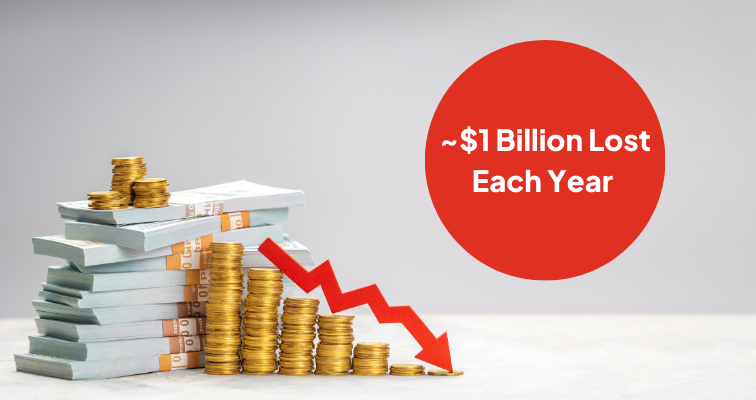Construction sites are hotbeds of criminal activity, especially theft, which results in an estimated $1 billion in losses for companies annually. These losses prompt questions about who is really responsible for construction site security.

The short answer is everyone on the jobsite. Jobsite security is part of everyone’s job description, and that collaborative effort protects workers, prevents accidents, and ensures successful, on-time project completion.
In today’s article, we cover some essential details about construction site security, including:
- Everyone’s responsibility for site security
- The role of technology in securing your jobsites
- Best practices you should implement today to prevent becoming another statistic
The Collaborative Nature of Construction Site Security
We’ve already mentioned that construction site security is part of everyone’s responsibilities and requires coordination between multiple stakeholders to be successful. The construction industry recognizes that protecting sites isn’t just a cost-saving measure; it protects workers and minimizes the risks to occupational safety.
Of course, you can’t just tell everyone they need to be responsible for site security. Unclear responsibilities lead to security lapses and inefficiencies. Assign clear, defined roles and expectations for every crew member and emphasize the role everyone plays in keeping sites secure.
General contractors, site supervisors, and team leaders will bear the brunt of the site security responsibilities. These site leaders balance oversight and execution, setting the standard for what each crew member brings to the site in terms of security and providing coaching or progressive discipline to those who fail to follow guidelines.
Who is Responsible for Construction Site Security?
While construction site security is a shared responsibility, each stakeholder contributes in unique ways to maintain it. These stakeholders and their responsibilities include:
- General Contractor: Holds overall responsibility for construction site compliance with security and safety regulations. The GC also establishes security protocols that include tools like surveillance systems, lighting, and barriers. They also verify subcontractors’ and workers’ knowledge of their legal responsibilities for safety and security.
- Site Supervisors: Supervisors are boots-on-the-ground leaders responsible for the day-to-day inspections of potential hazards and security concerns. They serve as a vital link between contractors and crews, providing guidance, communication, and compliance oversight. Site supers also implement personal protective equipment (PPE) standards.
- Subcontractors and Crews: Subcontractors and crews must adhere to safety and security regulations as outlined in their contracts. They must also attend mandatory security and safety training sessions to mitigate risks and are responsible for securing materials at the end of their shifts.
- Construction Safety Managers: Specialized position responsible for occupational safety protocols and compliance with OSHA regulations. These managers also conduct regular site audits and provide recommendations to protect workers, equipment, and machinery.
- Security Providers: Third-party security services, including technology providers like TrueLook, assist in site monitoring and threat mitigation. These providers also provide after-hours patrols, remote monitoring, and real-time response to alarms to dissuade and catch criminals.
We can’t stress enough how everyone plays a role in maintaining security standards. From the frontline crews to project managers, everyone’s responsible.
The Role of Technology in Supporting Responsibilities
Technology is a growing component of security, with its foundations dating back to the CCTV and analog lock days. Our modern landscape offers more exciting solutions that prop up security strategies and add layers of protection that prevent crime from happening in the first place.
Some of these emerging technological solutions include:
- Remote Live-Viewing: Enables supervisors to view jobsites from anywhere. Stakeholders, developers, and investors can set up dashboards to see multiple sites simultaneously. Tools like TrueLook’s platform provide live feeds to identify security issues in real time.
- Incident Documentation: Time-lapse and recorded footage bring clarity when injuries or security breaches happen. These videos determine liability, especially when preventable incidents occur.
- Data Sharing Collaboration: TrueLook’s live feeds and reporting features are sharable to all stakeholders. This transparent data sharing means everyone can stay up-to-date with all safety and security concerns or incidents.
- Access Control Systems: New technologies, like ID scanners and biometric entry systems, limit site access to authorized personnel. These security measures provide additional layers of protection by tracking who comes and goes and even providing restricted access to vendors.
- Customizable Alerts and Notifications: Tailor alerts to specific roles. For example, a supervisor can receive a perimeter breach notification while safety managers get equipment safety warnings. These real-time alerts help prevent incidents while providing insights into the frequency of potential occurrences.
- AI-Powered Insights: The newest iteration of the construction camera is AI software that can identify unusual patterns, unauthorized access, or potential hazards automatically. These tools work without requiring constant human intervention, freeing staff to focus on more impactful tasks.


A suite of technologies used in conjunction with traditional security measures, like barriers, fencing, and lights, adds a level of security that prevents most security breaches. You can even see how a company like TrueLook elevates your security posture by requesting a live demo!
Best Practices for Assigning Security Responsibilities
While security is everyone’s responsibility on the construction site, and there are plenty of security measures you can deploy, without a plan, they can be meaningless. To combat the potential lapses in security, implement some of these best practices:
- Outline Clear Job Descriptions: As part of every job description, outline security and safety responsibilities for each role. These responsibilities should also grace every contract you sign with GCs, subcontractors, and crews to determine accountability.
- Regular Training and Security Updates: Require ongoing security and safety training to adapt to new and emerging risks or technology. You can also deploy short refresher sessions between major training updates to prevent security incidents.
- Implementing Chain of Command: Establish a clear hierarchy to ensure responsible parties address incidents quickly and effectively. For example, that could mean supervisors report security gaps to the general contractor, who then engages a provider to propose a solution.
- Routine Security Reviews: Schedule routine security audits to assess compliance, identify gaps, and minimize risks. Review your technology suite, like live feeds, alarms, and access control systems, to ensure they meet your project needs.
A few small changes can make a massive difference in your security position. Keeping security at the top of your priority list signals to the rest of the job site that it’s a top priority for them as well.
Take Control of Your Construction Site Security
Construction site security requires a well-coordinated effort between general contractors, subcontractors, workers, and stakeholders to create a secure working environment. By clearly defining the joint responsibilities, implementing comprehensive security training, and leveraging modern technology, you can significantly reduce the risk and cost of security breaches.
For those seeking to advance their construction site security protocols, consider partnering with TrueLook’s security professionals, who can help evaluate your current protocols and recommend improvements. Securing your site takes teamwork and the right technology. With both in place, you can feel good about your site staying protected.

